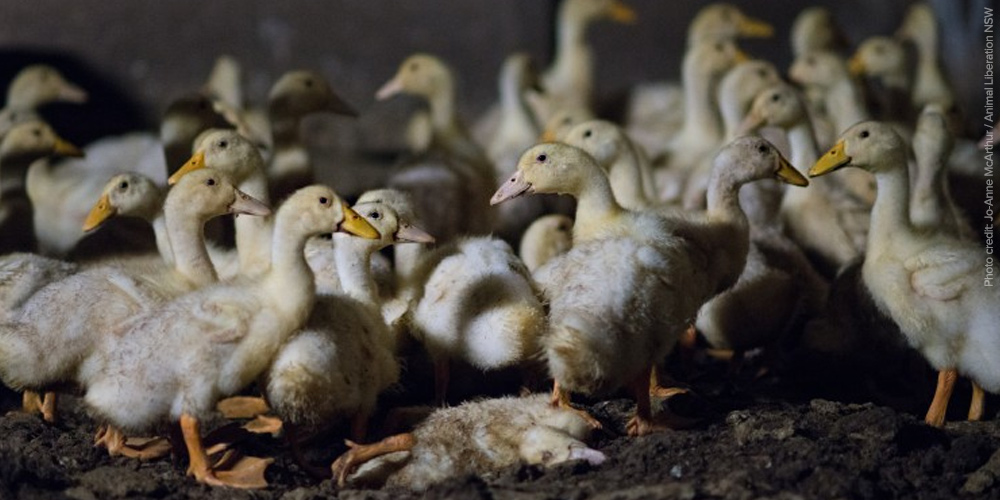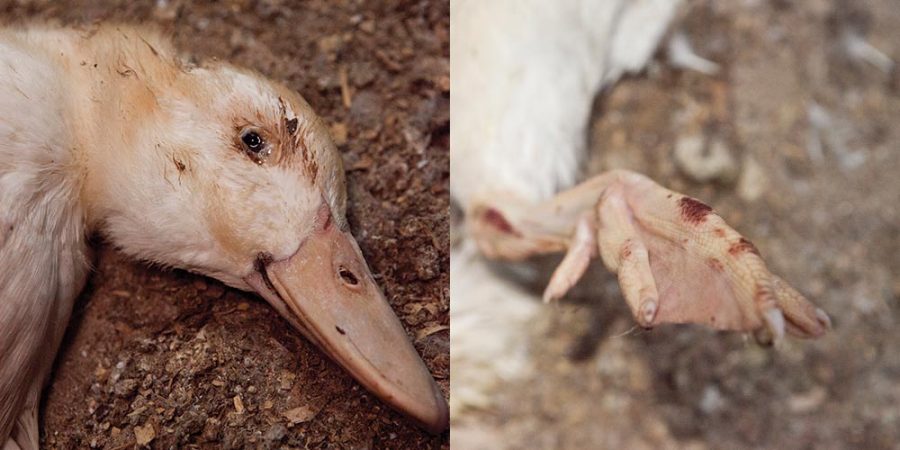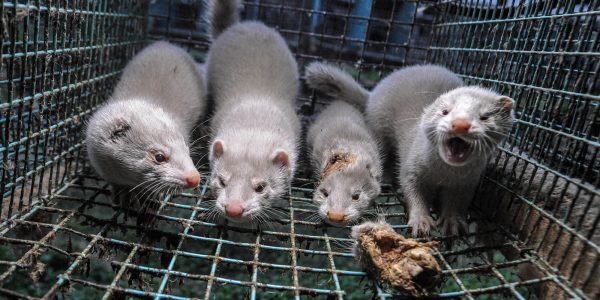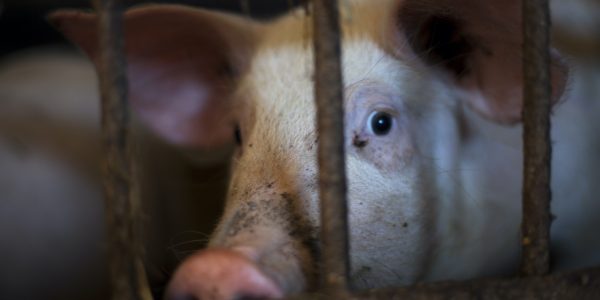References
[1] VIVA! USA, ‘Ducks out of water: a report on the duck industry in the USA’. Retrieved from: http://www.vivausa.org/campaigns/ducks/duckreport01.htm
[2] The Humane Society of the United States, ‘An HSUS Report: The welfare of animals in the duck industry’. Retrieved from: http://www.humanesociety.org/assets/pdfs/farm/hsus-the-welfare-of-animals-in-the-duck-industry.pdf
[3] (On examination of Animal Liberation NSWs video footage of ducks within total confinement farming facilities such as those used by major Australian duck producers.) Animal Liberation NSW, ‘Like a duck out of water: an exposé of the Australian duck industry’, 2013. Retrieved from: http://www.aussieducks.com.au/report
[4] Rob Porter, D.V.M., Ph.D., DACVP, DACPV, Diseases of Small Poultry Flocks, 2003. Retrieved from: http://www.poultryu.umn.edu/
[5] VIVA! UK, Ducks out of Water: A report on the UK duck industry. Retrieved from: http://www.viva.org.uk/ducks-out-water-report-uk-duck-industry
[6] Animal Liberation NSW, ‘Like a duck out of water: an exposé of the Australian duck industry’, 2013. Retrieved from: http://www.aussieducks.com.au/report
[7] Primary Industries Standing Committee, The Australian Code of Animal Welfare Practice, Domestic Poultry 4th Edition. Retrieved from: http://www.publish.csiro.au/pid/3451.htm
[8] Primary Industries Standing Committee, The Australian Code of Animal Welfare Practice, Domestic Poultry 4th Edition. Retrieved from: http://www.publish.csiro.au/pid/3451.htm
[9] Animal Liberation NSW, ‘Like a duck out of water: an exposé of the Australian duck industry’, 2013. Retrieved from: http://www.aussieducks.com.au/report
[10] The Humane Society of the United States, ‘An HSUS Report: The welfare of animals in the duck industry’. Retrieved from: http://www.humanesociety.org/assets/pdfs/farm/hsus-the-welfare-of-animals-in-the-duck-industry.pdf
[11] PoultryHub, Duck. Retrieved from: http://www.poultryhub.org/species/commercial-poultry/duck/










